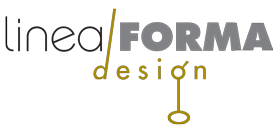I’ve often talked—to anyone who will listen—about how 3D models can be used as a substitute for the real thing. I have made and rendered realistic 3D models, and sometimes animated them for use in product literature and videos, showing products that were still months away from production.
This week, I took that concept to the next level. While helping a client develop a new product, I found a stock, but uncommon extrusion that fit my vision on how to simplify the client’s concept. Unfortunately, the aluminum extruder is located on the East Coast, had no parts in stock, had a 300 lb. minimum order, and over a month lead time, plus shipping across the country. But a minimum order before even testing proof of concept was, understandably, a big leap of faith for my client.
The extrusion tolerances are important to the concept, so mocking up cardboard or balsa wood models would not be good enough. The model would have to match the real extrusion. So, last week I bought my first 3D printer to try my hand at printing out a prototype part. The 3D printer marketplace is relatively new and uncharted territory, and there is no store down the street with a genius bar and instant service if something goes wrong. Having said that, I knew it was time for an adventure. And I have wanted one of these toys, I mean tools, for a long time.
Although professional-grade printers cost thousands of dollars, there are a few personal-level products for under $1000 that can do an acceptable job within the right parameters. After reviewing all the competitors in the under $1000 group, I found the ROBO 3D R1 Plus had the biggest bed size (9” x 10”) and also some of the best reviews. The extrusion I needed had to be 10” long, so size was an issue. The printer arrived 48 hours after ordering it and setup was easy and took under an hour (poor instructions notwithstanding). The first two parts I printed warped a bit, so were unacceptable for the close tolerances I needed. Blasting the print bed with hair spray took care of the problem by making the plastic stick to the print bed uniformly, and my third and fourth tries gave me two perfect parts that can be used in prototyping, and my client can move forward on the concept before having to place a big order for parts. Each part takes over 2 hours to print out, but watching a model take shape reminds me of watching my first color prints slowly spill out of my Epson 3000 wide format printer almost 20 years ago. Only it’s more exciting to add another dimension. There’s just something special about that 3rd one!!
After years of making 3D models in software for presentation purposes, it was certainly satisfying to take a 3D model into the “actual” 3rd dimension. The printer sits between my iMac and my PC, connects to both of them, and is starting to feel like a real physical bridge between my graphic and product development worlds.
Personal-level 3D printers have their limitations, but are feature rich enough for this level of project. Disruptive innovation saved the day! My mind is spinning with possibilities!
Share this:


4 Responses
GGC
Amazing!! Great blog, as usual. And what a cool toy, er tool!!!! Gotta check that out next time I’m in town.
bgob1
My newest magical toy. Thanks for the comments. Come up again soon.
Art
I can only imagine where all this might lead!
bgob1
Thanks Art. Gonna be fun.